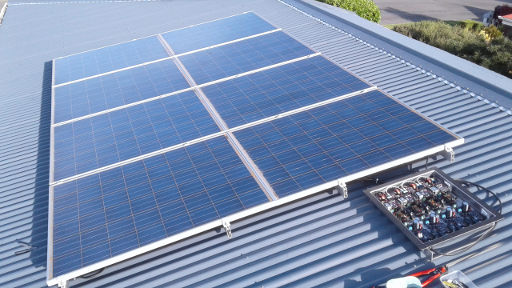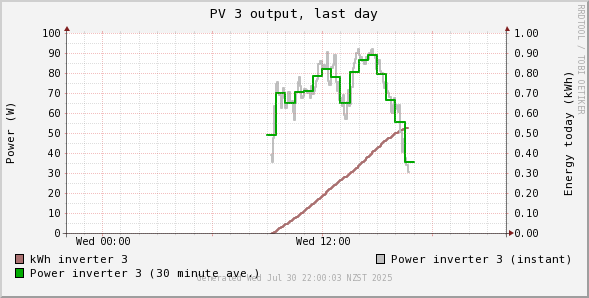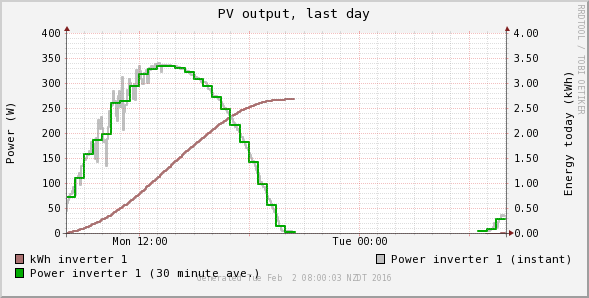
Welcome to the open source micro-inverter project based in Christchurch, New Zealand! See the introduction or continue reading below for the back story.
Background
The project started with an idea of using photovoltaic (PV) solar panels to heat the water in a domestic hot water cylinder. This would either supplement or completely replace the use of power from the electricity grid for heating water in the home.
History
Work on the first prototype started in 2013 at the CPIT (now the Ara Institute) as part of a final year project. Work has continued in the intervening years resulting in improvements in both power output and efficiency. A prototype has been generating useful amounts of power since January 2016.
The inverter works by coupling a photovoltaic panel to a standard off the shelf hot water cylinder heating element. In other words it heats water. It is a micro inverter design which means it's easy to run multiple panels and inverters in parallel for increased output. As a bonus the design is extremely efficient!
Benefits
Comparison with a traditional solar hot water system reveals some significant benefits. There are no moving parts so it can be very reliable. There is no need for high temperature (expensive) copper piping, nor for water pumps that work at high temperatures (also expensive). There is also no possibility of water damage due to frost-cracked pipes or panels. When combined with the ever dropping price of photovoltaic panels the all electric solution starts to look very appealing.
The following graph shows the real-time output from one of the inverters of the array in the photograph shown above. There are eight 190W panels in the array and four inverters. Each inverter is connected to a pair of panels.

To show the performance under ideal conditions, below is the power output on the first day of February 2016. That day had an almost text book perfect cloud free sky.

Another cloud free day this time June 2017, the middle of winter. Notice both the narrowing of the power output curve as well as the lower overall peak compared to summer time.

Wanted: We need a suitably catchy name for the inverter. Something that people can search for in Google. Also, if you would like to be involved with the ongoing development of this project, please contact me via E-Mail at the address at the bottom of the page.
-Martin van den Nieuwelaar
This page is covered by the GNU Free Documentation License
Martin van den Nieuwelaar, martin at gadgets dot co dot nz
Last updated 5 Jan 2019
